The Jhulta Minara Sidi Bashir Mosque, Gujarat, is renowned for its unique architectural features. This mosque, built in 1452 during the rule of Sultan Ahmed Shah, stands out due to its shaking minarets. The Jhulta Minara, or “shaking minarets,” exhibit an intriguing phenomenon where one minaret’s movement causes the other to shake as well. This mosque is a prime example of mediaeval Indian engineering and continues to attract tourists and architecture enthusiasts. The Sidi Bashir Mosque’s remarkable design and historical significance make it a fascinating destination.
Location
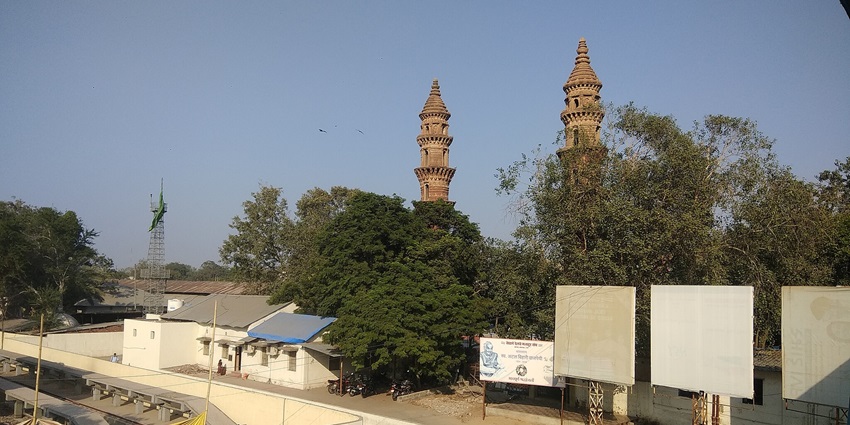
Photo: Tirth1011/ Wikimedia Commons
Situated in the city of Ahmedabad, Gujarat, the Jhulta Minara Sidi Bashir Mosque is easily accessible from various parts of the city. This mosque is located near the city’s old quarters, offering a glimpse into Ahmedabad’s rich historical past. The mosque’s strategic placement amidst other historic sites makes it a central point for visitors interested in exploring the city’s heritage.
Suggested Read: Discover The Heritage And Scenic Views Of The Historic Bharuch Fort
How To Reach The Jhulta Minara Sidi Bashir Mosque
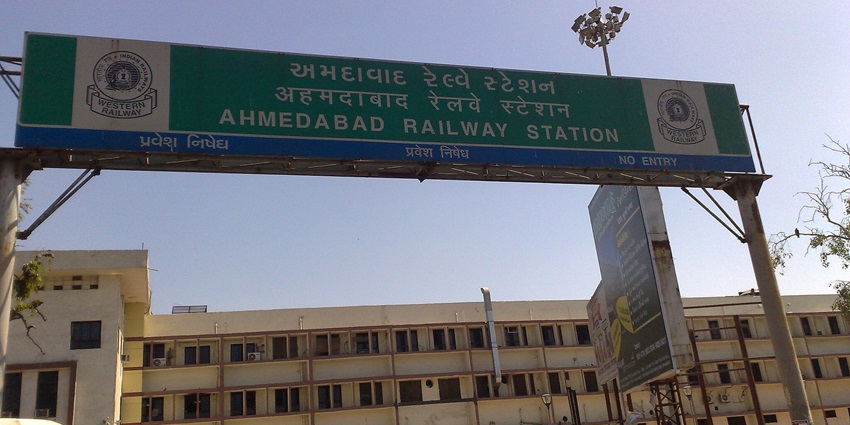
Photo: Superfast1111 / Wikimedia Commons
By Bus: Public buses in Ahmedabad connect various parts of the city to the Jhulta Minara Sidi Bashir Mosque. The local bus network offers convenient access with multiple routes passing near the mosque, making it an easy option for budget-conscious travellers.
By Rail: The nearest major railway station is Ahmedabad Junction. From there, visitors can take a taxi or local bus to reach the Jhulta Minara Sidi Bashir Mosque. The train services are frequent, providing a reliable mode of transport to the city.
By Taxi: Taxis are readily available throughout Ahmedabad and offer a direct route to the Jhulta Minara Sidi Bashir Mosque. This option is more comfortable and faster compared to public transport, especially if travelling in a group or carrying luggage.
Places To Visit Around The Jhulta Minara Sidi Bashir Mosque
While visiting the Jhulta Minara Sidi Bashir Mosque, consider visiting these nearby attractions:
1. Sidi Saiyyed Mosque
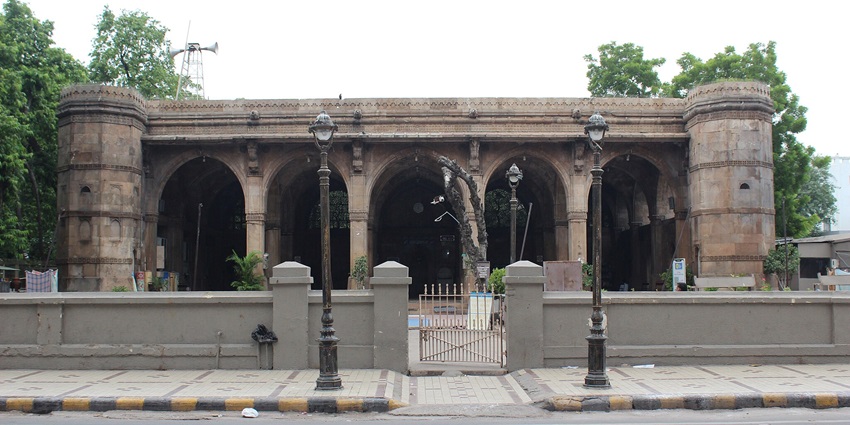
Photo: Snehrashmi / Wikimedia Commons
The Sidi Saiyyed Mosque, built in 1573, stands out with its remarkable lattice work. Situated a short distance from the Sidi Bashir Mosque, it showcases intricate stone carvings that exemplify Mughal architectural influences in Gujarat. The mosque’s ornate jali work, particularly the famous ‘Sidi Saiyyed Ni Jaali,’ reflects the exquisite artistry of its era. This historical gem provides a glimpse into the artistic excellence of Mughal craftsmanship and offers visitors a unique architectural experience.
Distance From The Jhulta Minara Sidi Bashir Mosque: 2.5 kms
Timings: 7 AM – 7 PM
Suggested Read: Places Near Ahmedabad For Weekend
2. Bhadra Fort
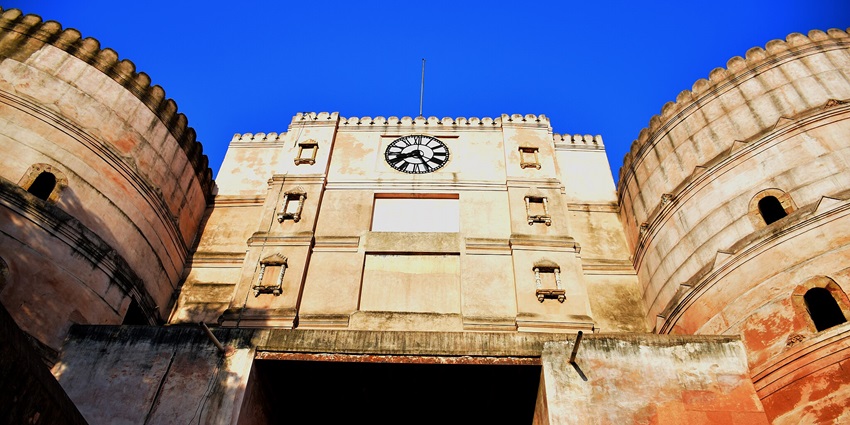
Photo: Miteshps1986 / Wikimedia Commons
Constructed in 1411, Bhadra Fort is a notable historical landmark in Ahmedabad. Located near the Sidi Saiyyed Mosque, the fort boasts impressive gates and historical significance from the reign of Sultan Ahmed Shah. Its sturdy walls and majestic gateways reflect the fort’s strategic importance during mediaeval times. Visitors can explore the fort’s rich history and architectural features, including its royal structures and battlements, which reveal insights into Gujarat’s past and its regal heritage.
Distance From The Jhulta Minara Sidi Bashir Mosque: 3 kms
Timings: 9 AM – 6 PM
3. Jama Masjid
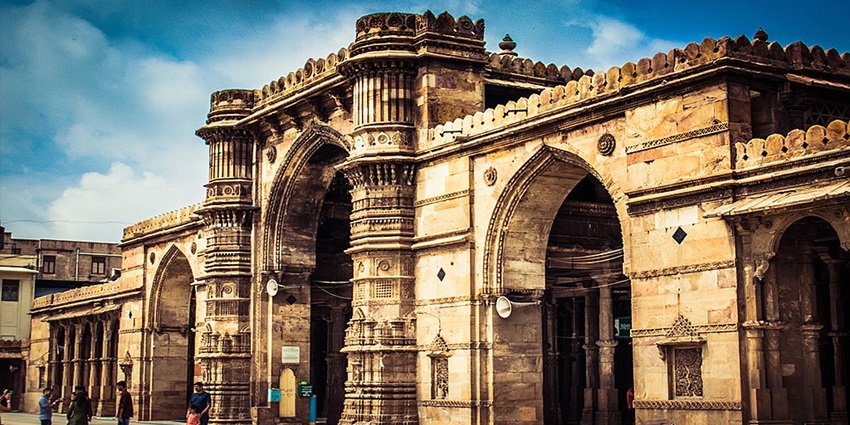
Photo: Zarnesh Kanojia / Wikimedia Commons
The Jama Masjid, located in Ahmedabad’s old city, is one of Gujarat’s largest mosques. Built during the 15th century, its grand architecture features towering domes and elegant arches, showcasing the splendour of mediaeval Islamic design. The mosque’s vast courtyard and intricate detailing offer a glimpse into the grandeur of Islamic architectural traditions. It stands as a testament to the city’s historical and religious significance, providing a serene space for reflection and admiration of its architectural prowess.
Distance From The Jhulta Minara Sidi Bashir Mosque: 4 kms
Timings: 7 AM – 7 PM
Suggested Read: Forts In Gujarat That Are Architectural Marvels And Define A Glorious Past
4. Sabarmati Ashram
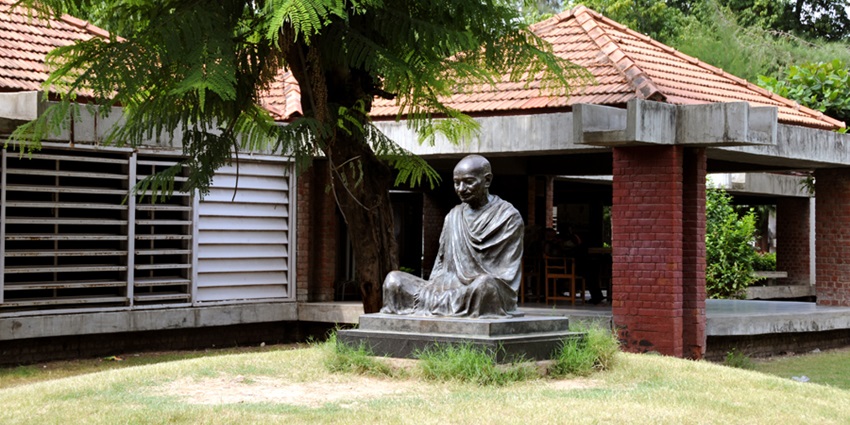
Photo: Hardik jadeja / Wikimedia Commons
Sabarmati Ashram, situated on the banks of the Sabarmati River, was once Mahatma Gandhi’s residence and a pivotal site in India’s independence movement. The ashram features a museum dedicated to Gandhi’s life, including exhibits on his principles, activities, and the freedom struggle. Visitors can explore Gandhi’s living quarters, learn about his philosophy, and gain insights into the historical events that shaped India’s journey to independence. The ashram remains a symbol of peace and perseverance.
Distance From The Jhulta Minara Sidi Bashir Mosque: 7 kms
Timings: 8:30 AM – 6:30 PM
5. Calico Museum of Textiles
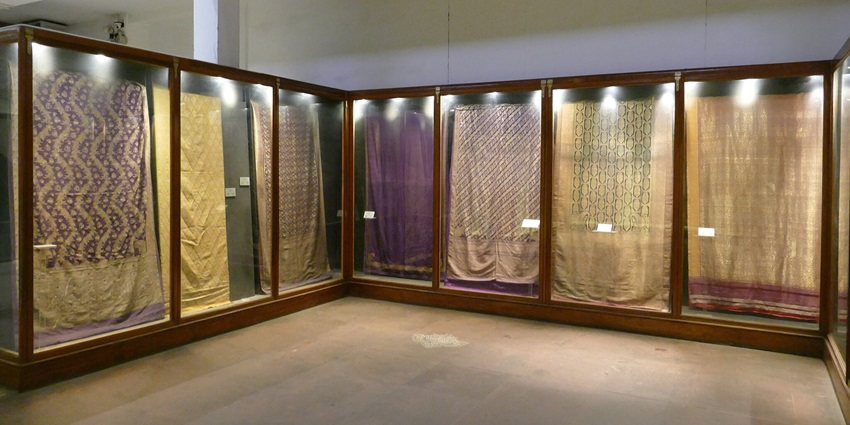
Photo: Kritzolina / Wikimedia Commons / Image For Representation Only
The Calico Museum of Textiles is celebrated for its extensive collection of Indian textiles, showcasing diverse fabrics and craftsmanship. The museum offers an in-depth look at India’s rich textile heritage, featuring garments, weaving techniques, and textile history. Through its curated exhibits, visitors can appreciate the intricate artistry and cultural significance of Indian textiles. The museum provides a comprehensive understanding of the traditional and contemporary textile industry, highlighting the country’s artistic and cultural evolution.
Distance From The Jhulta Minara Sidi Bashir Mosque: 5 kms
Timings: 10 AM – 5 PM
Suggested Read: Breathtaking Weekend Places In Gujarat You Must Explore
Where To Stay
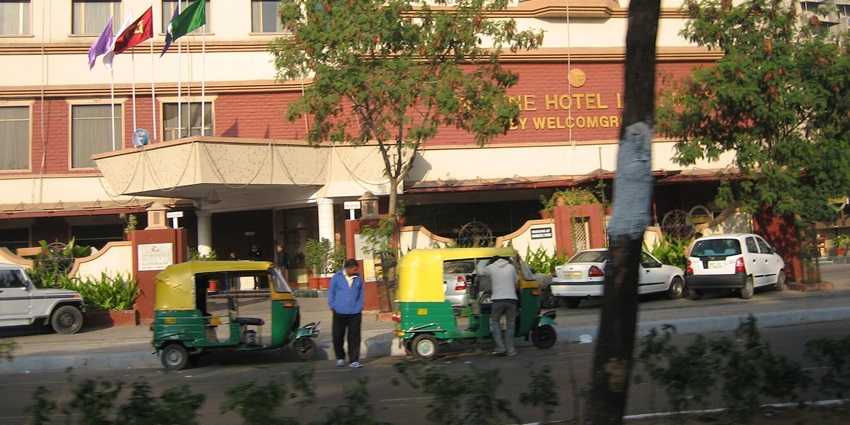
Photo: Helfmann / Wikimedia Commons
Ahmedabad provides a variety of accommodation options for all budgets, including both luxury and budget-friendly hotels. Many of these hotels are conveniently located near major attractions like the Jhulta Minara Sidi Bashir Mosque. Choose accommodations with easy access to public transport for added convenience.
Where To Eat

Photo: Shubhamj29 / Wikimedia Commons
Dining options around the Jhulta Minara Sidi Bashir Mosque offer a wide range of culinary delights. Local eateries and restaurants feature traditional Gujarati dishes such as dhokla and khandvi. Many dining establishments are within walking distance, allowing visitors to savour authentic regional flavours.
Suggested Read: Best Picnic Places In Gujarat For Unforgettable Family Adventures And Relaxation
Best Time To Visit Jhulta Minara Sidi Bashir Mosque
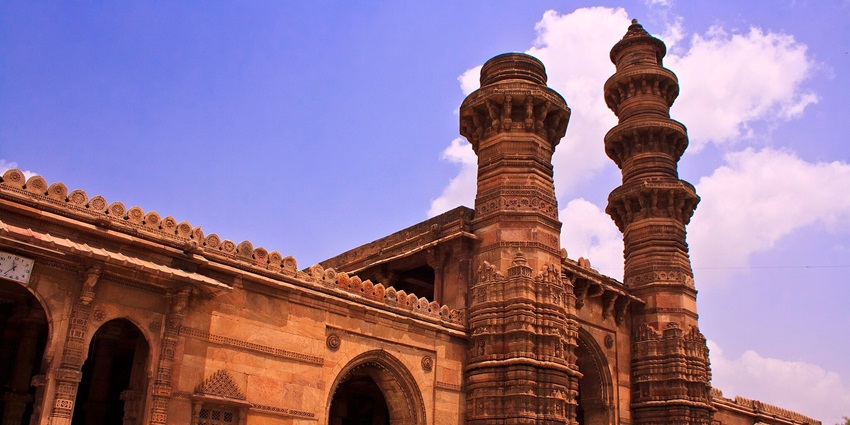
Photo: Asimpatel / Wikimedia Commons
The ideal time to visit the Jhulta Minara Sidi Bashir Mosque is between November and March. During these months, Ahmedabad experiences cooler and more pleasant weather, perfect for sightseeing. The moderate temperatures enhance the experience of exploring historic sites and enjoying outdoor activities without the discomfort of extreme heat.
Other Factors To Consider
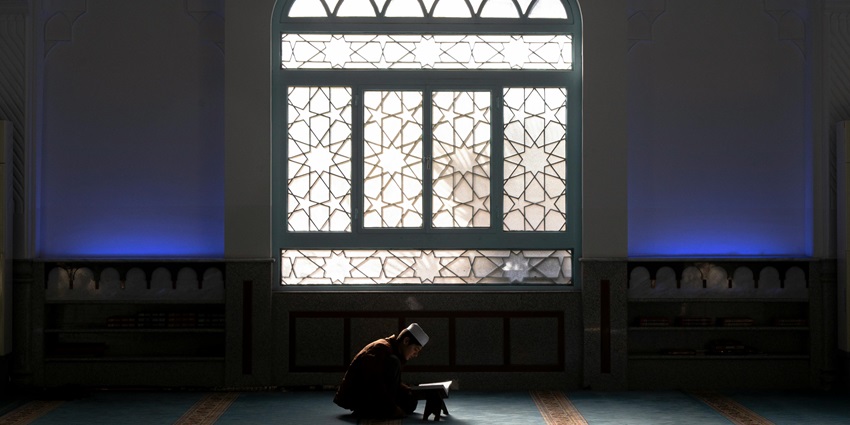
Photo: mohammad ramezani / Pexels / Image For Representation Only
Average Cost Of The Trip
A trip to the Jhulta Minara Sidi Bashir Mosque typically costs around ₹2,000 to ₹3,000 per day, including transportation, accommodation, and meals. This estimate may vary based on personal preferences and travel style.
Tips For Travellers
- Dress modestly when visiting religious sites.
- Carry bottled water and stay hydrated, especially in warmer months.
- Respect local customs and traditions while exploring religious and historical sites.
- Use local transport or taxis for convenience in navigating the city.
- Be mindful of your belongings and stay alert in crowded areas.
Suggested Read: Top Fascinating Museums In Gujarat You Need To Visit
The Jhulta Minara Sidi Bashir Mosque provides a captivating glimpse into mediaeval engineering and architectural brilliance. Renowned for its shaking minarets, this mosque showcases intricate designs and historical significance that continue to intrigue visitors. These minarets, known for their unique swaying motion, offer an extraordinary example of ancient engineering techniques. To fully appreciate this remarkable site and other historical and cultural attractions in Ahmedabad, plan your visit with TripXL.
Cover Photo: Miteshps1986 / Wikimedia Commons


 WhatsApp
WhatsApp
 Twitter
Twitter









